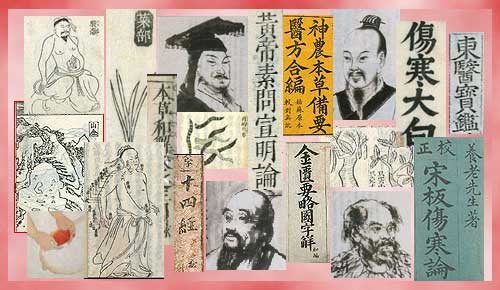Exploring the Essence of Traditional Chinese Medicine: An Introduction to Ancient Healing Wisdom

In the realm of holistic wellness and alternative therapies, Traditional Chinese Medicine (TCM) stands as a beacon of ancient wisdom, offering profound insights into the interconnectedness of mind, body, and spirit. With roots dating back thousands of years, TCM is a comprehensive system of healthcare that has evolved through centuries of observation, experimentation, and refinement.
At its core, TCM operates on the principle that the human body is a microcosm of the natural world, governed by the flow of vital energy known as Qi (pronounced "chee"). According to TCM philosophy, Qi circulates through meridians or pathways in the body, nourishing organs and tissues while maintaining balance and harmony. When the flow of Qi is disrupted or blocked, illness and discomfort arise. Thus, the primary goal of TCM is to restore the harmonious flow of Qi, thereby promoting health and vitality.
Central to the practice of TCM are several key modalities, each offering unique approaches to diagnosis and treatment. Acupuncture, perhaps the most well-known TCM technique, involves the insertion of fine needles at specific points along the body's meridians to stimulate Qi flow and alleviate symptoms. Herbal medicine, another cornerstone of TCM, harnesses the therapeutic properties of plants and minerals to address a wide range of health conditions. Herbal formulations are meticulously crafted based on individual constitution and symptomatology, reflecting TCM's personalized approach to healing.
In addition to acupuncture and herbal medicine, TCM encompasses various adjunctive therapies such as cupping, moxibustion, tui na massage, and qigong exercises, each playing a vital role in restoring balance and promoting well-being. Cupping, for instance, involves the application of suction cups to the skin to alleviate muscle tension, improve circulation, and facilitate detoxification. Moxibustion, on the other hand, utilizes the burning of dried mugwort (moxa) to warm acupuncture points and stimulate Qi flow. Tui na massage, a form of Chinese therapeutic massage, targets acupressure points and meridians to relieve tension and promote relaxation. Qigong, a mind-body practice, combines gentle movements, breathing exercises, and meditation to cultivate Qi and enhance vitality.
Beyond its efficacy in treating a wide range of acute and chronic ailments, TCM offers a holistic perspective on health that emphasizes the interconnectedness of the individual with their environment. In TCM philosophy, wellness is not merely the absence of disease but a state of dynamic equilibrium between the body, mind, and spirit. Thus, TCM practitioners strive to address not only the physical symptoms but also the underlying imbalances and disharmonies that contribute to illness.
In recent years, interest in TCM has surged worldwide, driven by growing recognition of its efficacy, safety, and holistic approach to health. From acupuncture clinics in bustling urban centers to herbal pharmacies in remote villages, TCM continues to thrive as a vital component of global healthcare. As we navigate the complexities of modern life, the timeless wisdom of TCM serves as a guiding light, reminding us of our innate capacity for healing and transformation.

In the realm of holistic wellness and alternative therapies, Traditional Chinese Medicine (TCM) stands as a beacon of ancient wisdom, offering profound insights into the interconnectedness of mind, body, and spirit. With roots dating back thousands of years, TCM is a comprehensive system of healthcare that has evolved through centuries of observation, experimentation, and refinement.
At its core, TCM operates on the principle that the human body is a microcosm of the natural world, governed by the flow of vital energy known as Qi (pronounced "chee"). According to TCM philosophy, Qi circulates through meridians or pathways in the body, nourishing organs and tissues while maintaining balance and harmony. When the flow of Qi is disrupted or blocked, illness and discomfort arise. Thus, the primary goal of TCM is to restore the harmonious flow of Qi, thereby promoting health and vitality.
Central to the practice of TCM are several key modalities, each offering unique approaches to diagnosis and treatment. Acupuncture, perhaps the most well-known TCM technique, involves the insertion of fine needles at specific points along the body's meridians to stimulate Qi flow and alleviate symptoms. Herbal medicine, another cornerstone of TCM, harnesses the therapeutic properties of plants and minerals to address a wide range of health conditions. Herbal formulations are meticulously crafted based on individual constitution and symptomatology, reflecting TCM's personalized approach to healing.
In addition to acupuncture and herbal medicine, TCM encompasses various adjunctive therapies such as cupping, moxibustion, tui na massage, and qigong exercises, each playing a vital role in restoring balance and promoting well-being. Cupping, for instance, involves the application of suction cups to the skin to alleviate muscle tension, improve circulation, and facilitate detoxification. Moxibustion, on the other hand, utilizes the burning of dried mugwort (moxa) to warm acupuncture points and stimulate Qi flow. Tui na massage, a form of Chinese therapeutic massage, targets acupressure points and meridians to relieve tension and promote relaxation. Qigong, a mind-body practice, combines gentle movements, breathing exercises, and meditation to cultivate Qi and enhance vitality.
Beyond its efficacy in treating a wide range of acute and chronic ailments, TCM offers a holistic perspective on health that emphasizes the interconnectedness of the individual with their environment. In TCM philosophy, wellness is not merely the absence of disease but a state of dynamic equilibrium between the body, mind, and spirit. Thus, TCM practitioners strive to address not only the physical symptoms but also the underlying imbalances and disharmonies that contribute to illness.
In recent years, interest in TCM has surged worldwide, driven by growing recognition of its efficacy, safety, and holistic approach to health. From acupuncture clinics in bustling urban centers to herbal pharmacies in remote villages, TCM continues to thrive as a vital component of global healthcare. As we navigate the complexities of modern life, the timeless wisdom of TCM serves as a guiding light, reminding us of our innate capacity for healing and transformation.